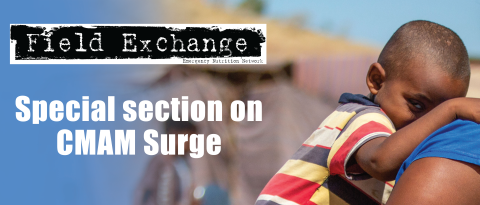A review of cost and cost-effectiveness of treatment for child undernutrition
Research snapshot1
Malnutrition is estimated to account for an 11% yearly loss in gross national product in Africa and Asia as a result of provider costs of treating undernutrition and its associated infections, reduced educational performance and lower agricultural activity. To reduce the cost of programmes and increase cost-effectiveness, it is recommended that outpatient and inpatient care for children with undernutrition are integrated through the community-based management of acute malnutrition (CMAM) programmes.
This study aims to determine the current state of knowledge about the costs and cost-effectiveness of child undernutrition treatment to households, health providers, organisations and governments in low- and middle-income countries. Through a systematic review of peer-reviewed studies, the authors identified 50 articles that included the costs of child undernutrition treatment. Costing methods used included cost analyses (n=33), cost-effectiveness studies (n=15) and cost benefit analyses (n=2).
The studies varied in the interventions considered and the costing methods used. The treatment costs reported ranged from USD0.44 to USD1,344 per child. Substantial costs for health providers and programmes were due to personnel, medication and therapeutic feeds. The costs of therapeutic feeds were high mainly because they were imported which suggests that using local ingredients to produce therapeutic foods could potentially reduce costs. Cost per disability adjusted life year (DALY) averted for CMAM programmes ranged between USD26 and USD53 which was much lower than facility-based management (USD1,344).
Despite the recommended integration of outpatient and inpatient care, this has not been adopted by many countries, hence many of the studies compared the cost outcomes of outpatient and inpatient care separately. Most studies adopted institutional/programme and health provider perspectives rather than community or household perspectives. Costs incurred by households with undernourished children have largely been ignored even though such costs may exceed government costs. This is predominantly due to the high expenditure on healthcare during malnutrition treatment and indirect costs, including the opportunity cost of time spent away from normal duties while taking care of sick children or attending clinics, majorly affecting a household’s economic productivity.
There is a need to assess the burden of the direct and indirect costs of child undernutrition to households and communities in order to plan, identify cost-effective solutions and address issues of cost that may limit delivery, uptake and effectiveness. Standardised methods and reporting in economic evaluations would facilitate interpretation and provide a means for comparing the costs and cost-effectiveness of interventions.
Subscribe freely to receive Field Exchange content to your mailbox or front door.
Endnotes
1 Njuguna, R. G., Berkley, J. A., & Jemutai, J. (2020). Cost and cost-effectiveness analysis of treatment for child undernutrition in low- and middle-income countries: A systematic review. Wellcome open research, 5, 62. https://doi.org/10.12688/wellcomeopenres.15781.2


